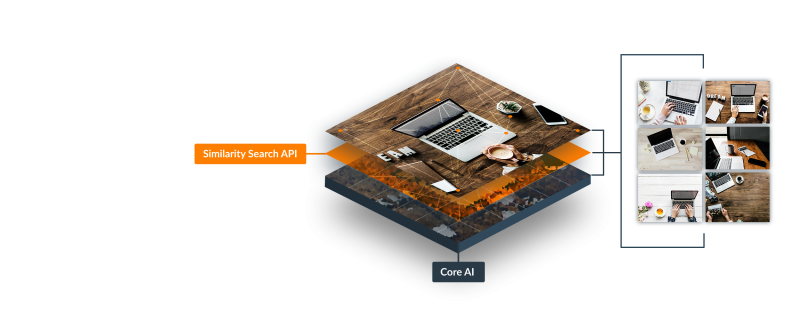As computer vision AI evolves and computers start “to see and understand” images better, visual search implementation and usage is growing in popularity. Apparel and home goods leaders are building visual search within their websites and mobile apps to make product discovery easier and increase conversions. Brands in the e-commerce space need to prepare to incorporate it in their digital shopping experience to take advantage of the shift in users search habits.
What is visual search and why should e-commerce business care about it?
In a text-based search, the user searches for an image by describing it with words or tags. In visual search, also called visual similarity search or image-based search, the user snaps an image with her camera and uploads it to the mobile application or website. Machine learning and computer vision technology in the background scrutinize the product/image inventory analyzing shapes, colors, and patterns and returns results that are visually similar to the reference image.
Visual search opens new possibilities in scenarios where the user doesn’t know how to describe the item she’s looking for but has a visual reference.

The adoption of visual search is growing
We are visual creatures able to process images faster than text. The human brain processes images hundreds of thousands of times faster than text and the majority of information transmitted to the brain is visual. It doesn’t come as a surprise that given the opportunity to search for information with visuals users are quickly adopting this search behavior.
Visual search stats in a nutshell
- The image recognition market is expected to grow to $25.65 billion by 2019
- The human brain processes images 60,000 times faster than text, and 90 percent of information transmitted to the brain is visual.
- The human brain can identify images seen for as little as 13 milliseconds. MIT research
- Pinterest reported more than 600 million visual searches every month across its visual search engine one year after its official release
- Images are returned for 19% of search queries on Google
- 85% of respondents put more importance on visual information than text information when shopping online for clothing or furniture. The Intent Lab
- Companies who redesign their websites and apps to support visual and voice search are expected to see 30% increase in digital commerce revenue by 2021. Gartner
ASOS, Farfetch, Target, Wayfair and Macy’s, to name just a few of the giant retailers, have visual search capabilities built into their e-commerce websites or mobile apps.
Consumers are increasingly using visual search and brands need to start thinking about incorporating it in their digital shopping experience.
What are the benefits of visual search?
Enhances product discovery
Visual search makes product discovery easier by allowing users to search with images for the closest possible or exactly the same representation of the item they are looking for.
Delivers where text search fails
It helps to answer questions which are hard to verbalize such as “I’m looking for a jacket like this one” or “what’s the best price for this sofa”.
Product recommendation made easy
Visual search provides the technology for a product recommendation system based on actual similarity and not other users preferences. Brands use it to power similar products suggestions to offer a bigger choice.
Alternatives to products out of stock
Visual search can help to decrease shopping cart abandon rate by using it to offer an alternative to products out of stock.
Visual search improves product discovery, delivers where text search fails, increases conversions, and decreases shopping cart abandonment while also offering rich media experience to users.
How can Imagga help my company implement visual search on our website or app?
Imagga Visual Search API can be easily integrated with your database. It’s very flexible and you can get feedback and advice from our team before you start. With Imagga Image Recognition API no task is too hard. We offer scalable pricing which adapts to your volume, whether you scale down or up. The functionality is supported by a full feature suite of companion API’s like auto-tagging, color extraction, custom categorization and smart cropping.
For highest accuracy results retrieval, the features relevant for the image database can be custom-defined. Furthermore, our expert machine learning team can help you customize the features relevant to your image database to achieve the highest possible search precision rate.
Not ready to implement visual search in your application yet but looking to maximize the searchable potential of your images ?
There are other ways to improve your products discovery and pave your way to computer vision AI. Many of our customers start with auto-tagging. The technology automatically assigns the proper tags from a list of hundreds of predefined tags. The true potential of Imagga auto-tagging technology though lies in its ability to be trained. It allows you to define tags specific for your particular use case and learns to recognize and suggest them. The AI-powered auto-tagging saves long hours of expensive manual labor and eliminates the inconsistencies resulting from the input of different employees or numerous vendors. In result, you maximize the searchable potential of your images for users and image search engines.
Learn more about Imagga Visual Search